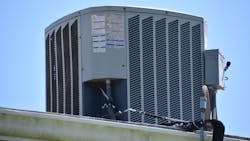50% of facilities managers don’t have reliable information for indoor air quality investments
According to a new survey commissioned by Omni CleanAir and conducted by Pollfish, companies often made subpar investments in indoor spaces, spending millions of dollars with limited success during the COVID-19 pandemic.
Most companies (95.6%) tried to do something to combat COVID-19 transmission in poorly ventilated, indoor spaces, according to the survey. The nationwide survey, conducted April through May 2021, consisted of an online survey of 436 HR Managers of companies with 500 or more employees. The margin of error was +/- 5%, with a confidence level of 95%.
The most popular approach by businesses was to upgrade existing HVAC systems — but HVAC upgrades typically cost more than $500,000 and in some cases as much as $5,000,000 depending on the number and size of the facilities. Additionally, for an upgraded HVAC system to improve air quality, it must operate continuously while the building is occupied. In other cases, businesses felt compelled to try relatively new and unproven ionization technologies.
When asked what kind of improvements were made within the last 12 months, respondents revealed the following trends:
· Survey data also show that HR managers and their COVID-19 task force colleagues are vastly underestimating the cost of HVAC upgrades.
· Among those who have not yet invested in solutions to improve indoor air quality, a majority anticipate they will upgrade their HVAC systems despite the growing evidence that these upgrades have minimal effect on improving indoor air quality or reducing transmission risk.
“What many businesses don’t realize is that HVAC systems, even when they can eliminate the virus, require large amounts of electricity to operate, so the long-term cost will be very burdensome and the resulting air often won’t be adequately cleaned,” said de la Port.
Of the survey respondents whose businesses hadn’t yet taken actions to improve indoor air quality most indicated they would allocate spending to ventilation in the next year. Of the small minority who said they would do nothing, they cited lack of education and information, as well as satisfaction with current air quality standards in their facilities.
